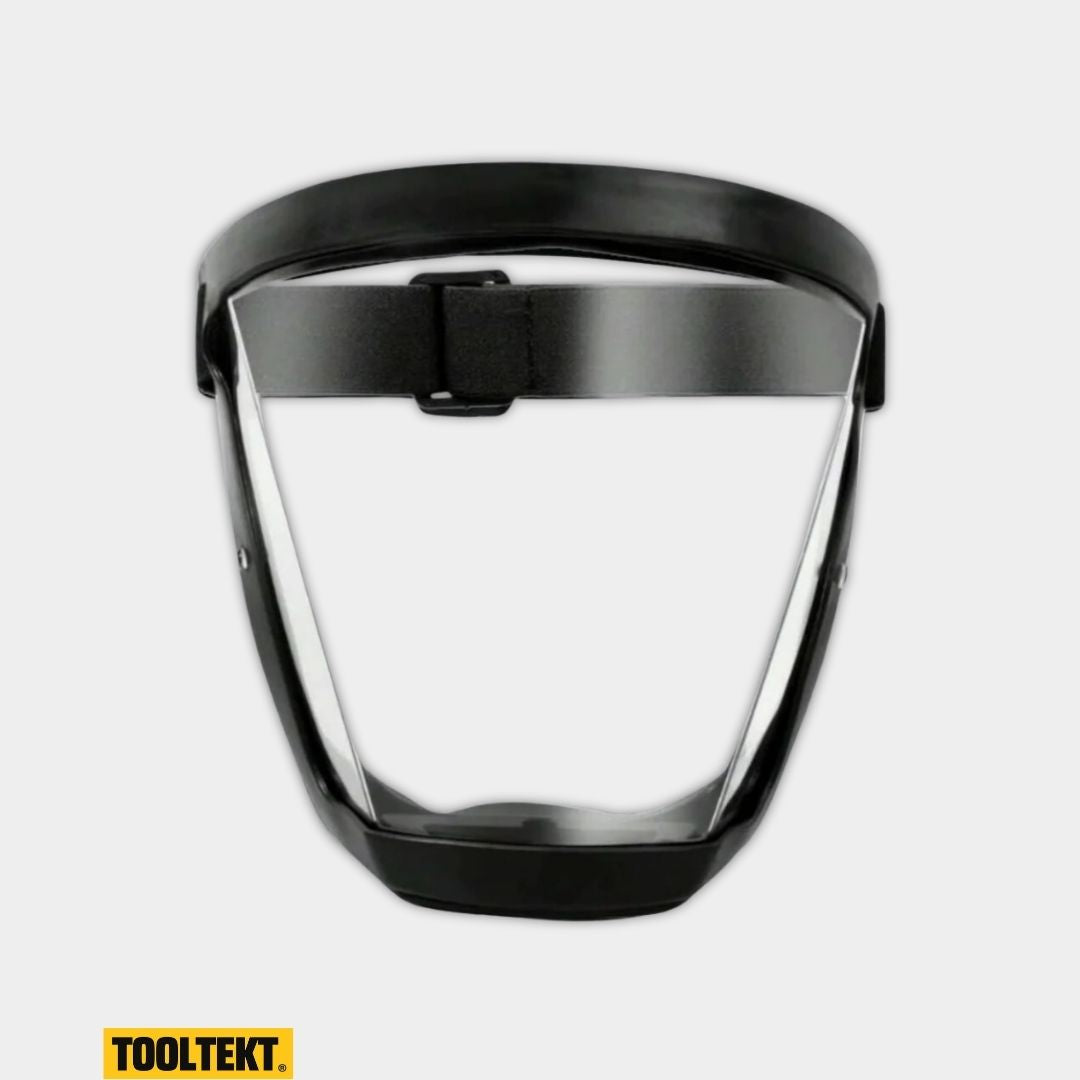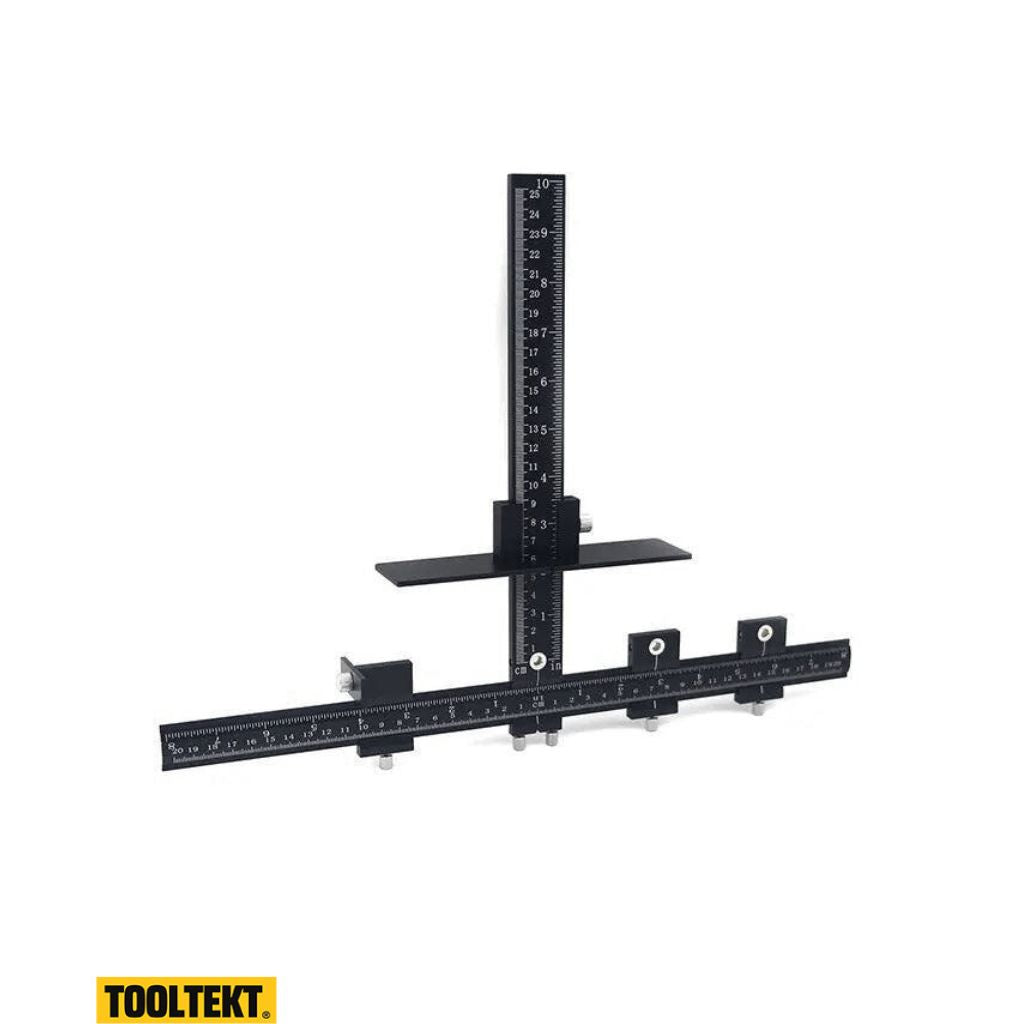
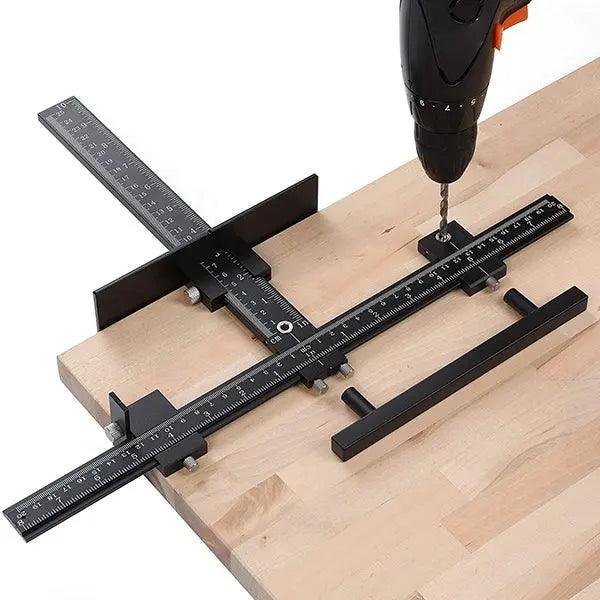
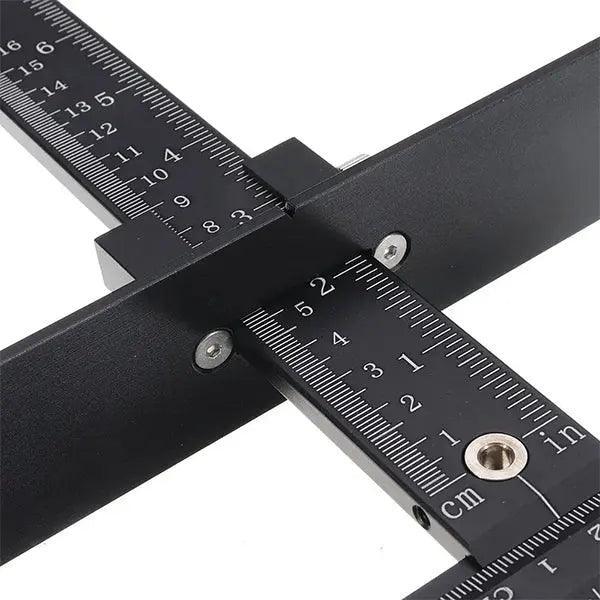
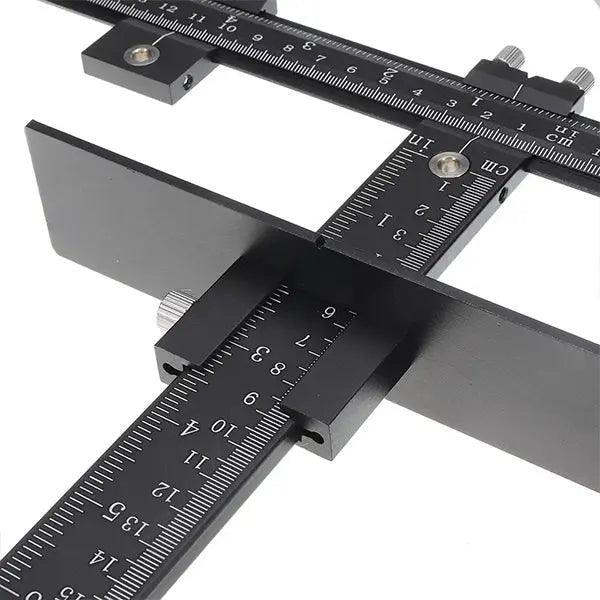
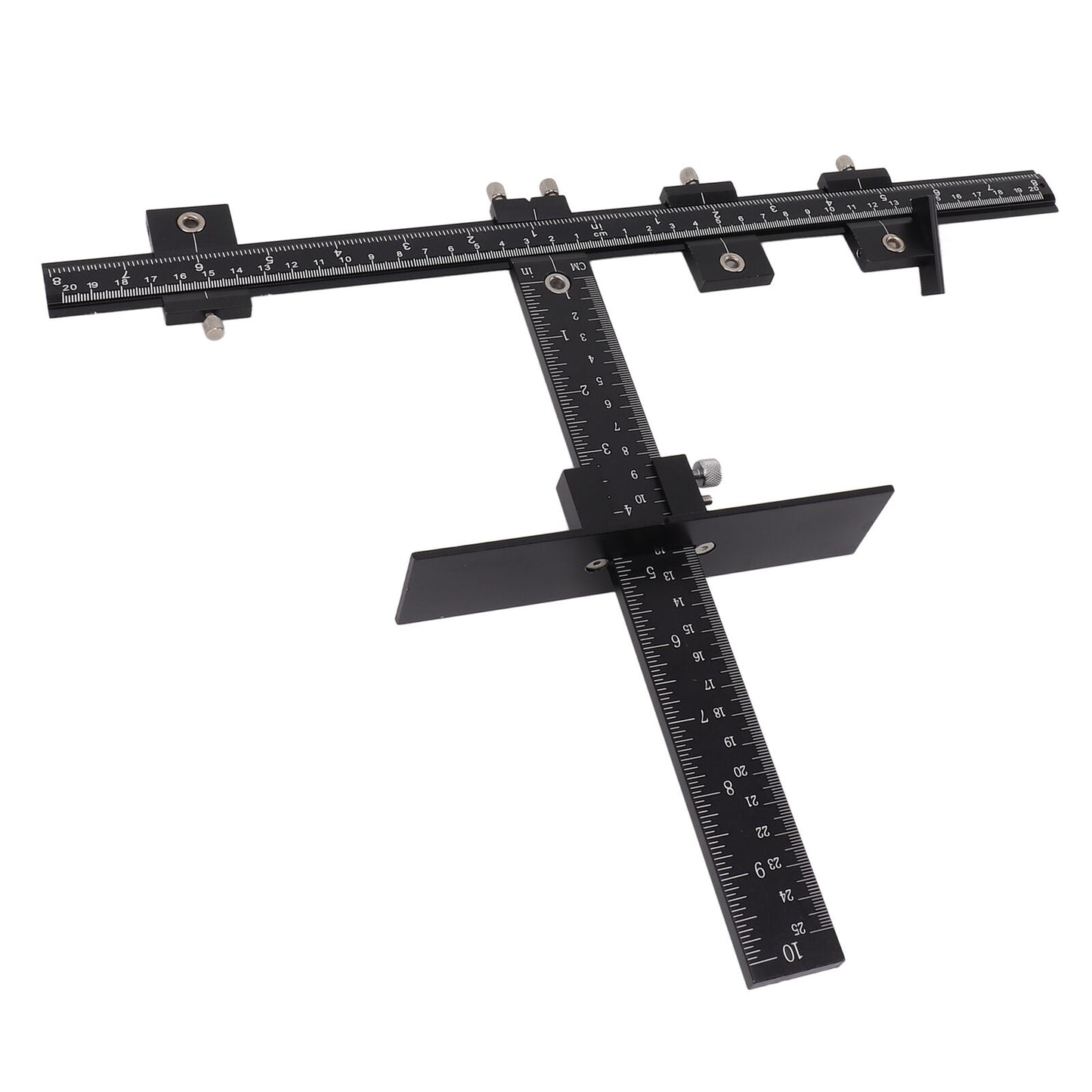
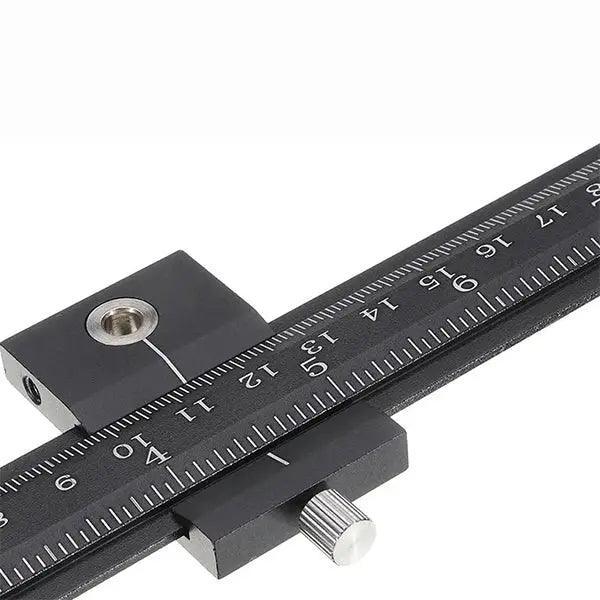
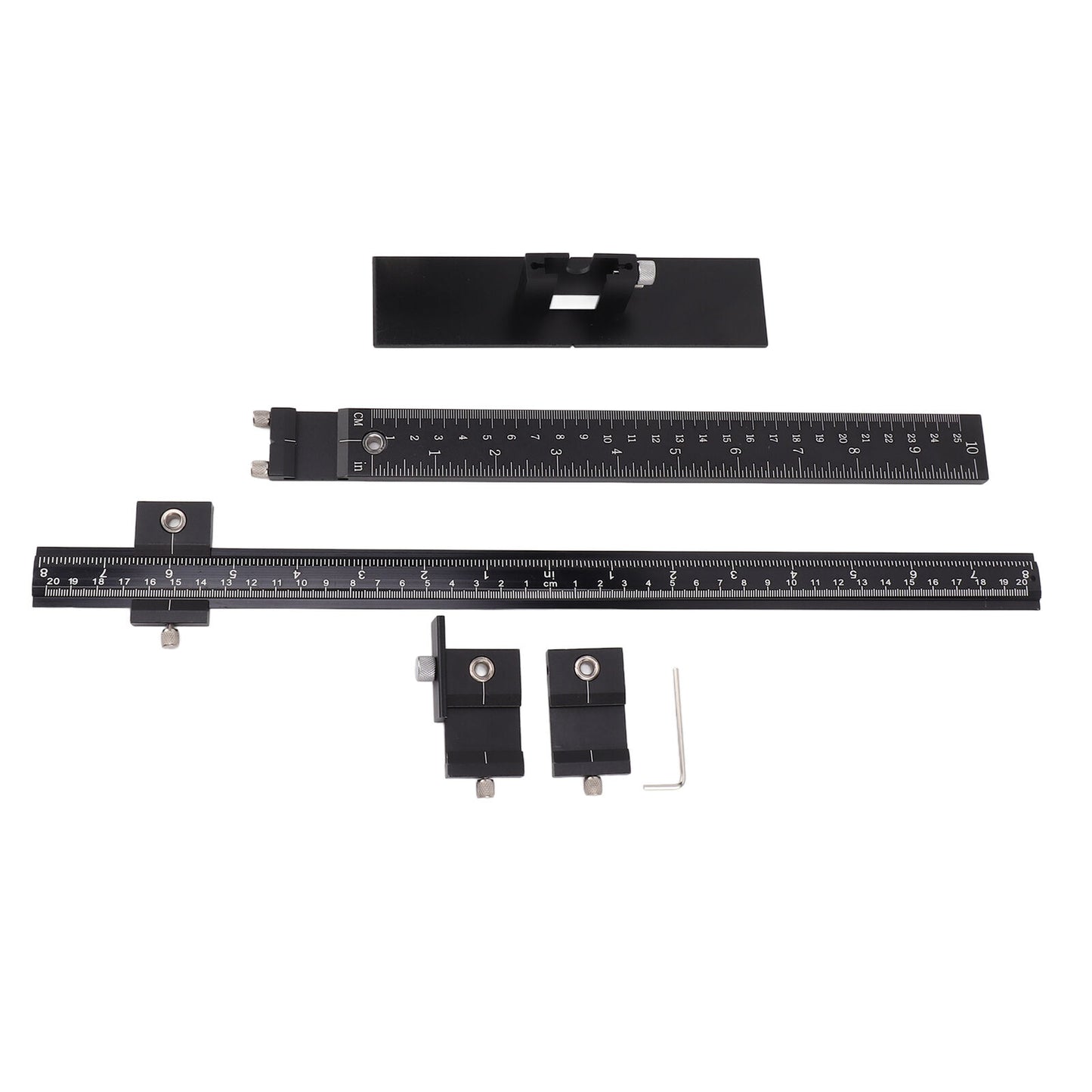
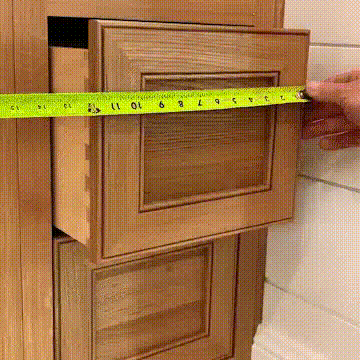
Engineered for Efficiency
Our advanced Cabinet Hardware Jig simplifies installation with no need for marking or clamping. Constructed from premium, hardened anodized aluminum, it boasts laser-engraved rulers and robust, case-hardened bushings for precision and durability.

Perfect Alignment Every time
Upgrade your cabinet hardware installations with our cutting-edge tool. Achieve flawless alignment quickly, eliminating laborious work and costly errors. It's a must-have for DIYers and professionals, making cabinet installations efficient and effortless.
Frequently Asked Questions
Do I need to be a cabinet professional to use the Cabinet Hardware Jig?
Do I need to be a cabinet professional to use the Cabinet Hardware Jig?
Not at all! This tool is very easy to use and designed to take the frustration out of hardware installation for homeowners and cabinet professionals alike. It is used by many professionals due to its substantial time savings, unrivaled accuracy, and durability.
Is the Cabinet Hardware Jig reversible for right and left doors?
Is the Cabinet Hardware Jig reversible for right and left doors?
Just set up the tool for one door and you can flip and drill for the next. We recommend checking that your thumb screws are still tight before drilling the next hole.
How do I prevent chipping?
How do I prevent chipping?
Adapt to Any Handle Size with Ease!Always make sure to start with a sharp drill bit. Generally chipping is not an issue with the provided drill bit. Extra precautions include taping the work surface with blue painter’s tape. For melamines and veneers, consider using a brad point bit.
How do I prevent blowout on the back of the door I am drilling through?
How do I prevent blowout on the back of the door I am drilling through?
Always use a sharp drill bit and relieve chips as you drill by pulling the drill out of the workpiece as it’s running to spin off excess wood chips. Do not apply much pressure while drilling, especially at the end of the hole. Holding or clamping a sacrificial block of scrap wood against the back of the door while you drill is recommended for extra protection against blowout. In most cases, the screw head covers any minimal blowout. In extreme cases, where a screw head would not cover minimal chipping from the exit of the drill, users will drill the hole halfway with a standard drill bit, then use a tapered drill bit to finish the hole. To prevent drilling injuries, always be aware of where your hands are positioned.

